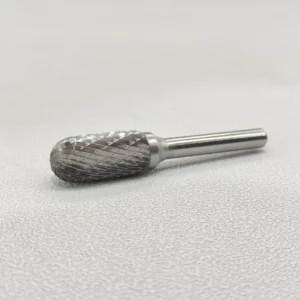Table des matières
BasculerSmall Carbide Burrs
When it comes to precision cutting, grinding, and shaping tasks, small fraises au carbure have become the go-to tools for professionals across various industries. These versatile cutting instruments offer exceptional performance and durability, making them invaluable for a wide range of applications. In this guide, we will explore how to select and utilize small carbide burrs effectively, ensuring optimal results and lasting satisfaction.
1. Understanding the Versatility of Small Carbide Burrs:
Small carbide burrs are industrially manufactured cutting tools made from tungsten carbide, which is known for its exceptional hardness and heat resistance. Their versatility lies in their ability to fit into tight spaces, making them perfect for detailed work and intricate tasks. From rapid stock removal to surface shaping and finishing, these burrs are designed to handle an array of materials, including metals, plastics, wood, and composites.
2. Factors to Consider When Purchasing Small Carbide Burrs:
a) Shapes and Sizes:
Small carbide burrs are available in a wide variety of shapes and sizes, each tailored for specific applications. Whether you require cylindrical, ball, tree, flame, or other specialized shapes, it is crucial to select the appropriate burr based on the desired outcome. For instance, a cylindrical burr is best suited for contouring while a ball-shaped burr is ideal for blending and smoothing surfaces.
b) Cutting Edge Type:
The cutting edge type of the carbide burr determines its efficiency and performance. Single-cut burrs have a single set of teeth designed for controlled stock removal, while double-cut burrs have crossed teeth that provide a finer finish with increased versatility. Understanding your project requirements will help you choose the most suitable cutting edge type.
c) Shank Size and Compatibility:
Consider the shank size and compatibility of the burr with your rotary tool or die grinder. Having the right shank size ensures a secure and vibration-free fit, allowing for precise and efficient operation. Additionally, check if the burr is compatible with both electric and pneumatic tools to ensure maximum flexibility.
3. Application Areas and Benefits of Small Carbide Burrs:
a) Metalworking:
Small carbide burrs excel in metalworking applications such as deburring, welding preparation, and removing sharp edges. They effortlessly shave away excess metal and provide a smooth finish on various metals like steel, aluminum, and cast iron. For instance, when creating a chamfer on a steel plate, a small cylindrical carbide burr can precisely carve the required angle, enhancing both the aesthetics and function of the workpiece.
b) Travail du bois :
In woodworking, small carbide burrs are invaluable for shaping, carving, and sculpting intricate designs with precision. They make quick work of removing excess material and producing smooth contours on wooden surfaces, allowing for fine detailing in furniture, crafts, and artistic creations. A tree-shaped carbide burr is particularly effective when hollowing out intricate patterns in wooden bowls or creating grooves for decorative inlays.
c) Automotive and Aerospace:
Small carbide burrs find extensive use in automotive and aerospace industries, where precision is of utmost importance. They assist in the fabrication of custom parts, porting and polishing engine components, and achieving intricate designs on detailed surfaces. For instance, using a flame-shaped carbide burr, technicians can precisely smooth and shape the edges of a turbine blade, optimizing its aerodynamic efficiency.
4. Pro Tips for Effective Usage:
a) Safety Comes First:
Always wear personal protective equipment, including safety glasses, gloves, and a face shield, when operating small carbide burrs. These tools generate heat and produce metal shavings, which can be hazardous if not properly protected against.
b) Speed and Pressure Control:
Maintain a consistent speed and regulated pressure while using small carbide burrs to achieve desired results. Excessive speed and pressure can lead to overheating and premature tool wear, while insufficient speed can cause ineffective cutting. Experiment on scrap materials first to find the optimal speed and pressure for your specific task.
c) Cooling and Lubrication:
Since carbide burrs generate heat during use, it is crucial to cool them periodically to prevent overheating. Regularly apply cooling oil or cutting fluid to lubricate the burr, enhancing its performance and extending its lifespan. Proper cooling is especially essential when working on heat-sensitive materials.
The versatility, durability, and precision of small carbide burrs make them indispensable tools in countless applications. By understanding the factors to consider when purchasing and utilizing these burrs effectively, users can achieve exceptional results and optimize their workflow. When harnessed with care and expertise, small carbide burrs become a reliable partner in shaping, cutting, and grinding tasks across various industries. Aspiring professionals and DIY enthusiasts alike can explore the limitless possibilities these tools offer, letting their creativity soar while achieving outstanding outcomes.
